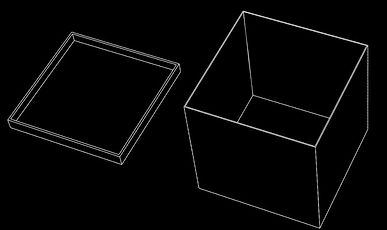MentAbacus
Whitepaper



"Mentabacus: Structured Recall through Spatial Encoding and Narrative - Revolutionizing Learning beyond the abstract-verbal Sphere"
By Dan Vandon
Mentabacus is a learning method that helps users retain what they’ve already understood — by turning ideas into simple diagrams, placing them in structured mental space, and anchoring them with stories. This whitepaper introduces the core framework and explains how it supports lasting recall.
The method is built on well-established research in cognitive science, including spatial memory, multi-modal encoding, and narrative learning. These foundations are explained clearly in the paper, grounding the method in both theory and practice.
Mentabacus uses a 3D grid, a trigger item (ATI), and a simplified diagram (SSD) to construct a memory “movie” anchored in space. The Information Overview Card (IOC) ties it all together: a visual tool where learners sketch, label, and mentally rehearse knowledge step by step.
Examples like the zero conditional clause in English grammar show how the system makes abstract material intuitive and memorable. The paper guides readers through the process: understand the idea, place it, tell a story, and recall the diagram.
This isn’t a content-teaching system — it’s a memory system for content already learned. It’s especially helpful for complex topics like grammar, science, or logic.
The whitepaper also outlines physical and digital uses — from boards and paper to future app integration. It compares Mentabacus with other learning tools and highlights its key strength: giving learners a clear mental home for what they know.
Available on request .
Specialty Whitepaper Module A
"Teaching with Mentabacus: From Memory Anchors to Recall"
A practical guide for teachers to bring memory, movement, and meaning into the classroom.
By Dan Vandon
This specialty paper equips educators with the tools to introduce and scale the Mentabacus method in classroom settings. Mentabacus helps learners retain abstract knowledge by transforming it into simple diagrams, narrative sequences, and spatially anchored memory scenes. The goal is to make complex ideas memorable through visual, physical, and story-based cues.
Rather than expecting teachers or students to adopt the entire method at once, the system is taught in layers. First come associations: teachers introduce a single object or image and show how meaning can be “loaded” into it through context. Then come story scenes: these objects are embedded in short, personal narratives. Only then is spatial placement introduced, starting with simple grids and eventually building toward the full 3D grid system that defines Mentabacus.
The method works particularly well for subjects like grammar, law, biology, or geography — areas where structured knowledge is often forgotten despite being understood. The paper walks educators through examples such as teaching the zero conditional clause or explaining a legal concept like unjust enrichment. The stories act as mental glue, while the simplified diagrams (SSDs) provide a logical skeleton for reconstruction.
To guide teachers, the paper includes lesson scaffolding for short (20–30 min), medium (60 min), and project-length units. Classroom activities range from sketching SSDs on paper, to narrating memory movies in pairs, to group exercises in reconstructing diagrams from story prompts. All materials can be used with minimal tech, though the method also lends itself to digital integration.
Formative assessments are lightweight and engaging — such as asking learners to “quick-draw” the diagram after 24 hours or retell their memory movie to a peer. For larger pilots, the paper proposes simple summative comparisons using structured recall tests. Mentabacus has already shown encouraging early-stage results in pilot settings, especially among students who previously struggled with long-term retention.
The tone of the paper is both academic and practical. Teachers are not treated as passive implementers but as creative agents who adapt the method to their own curriculum. Several adaptation pathways are included — for younger learners, language learners, and students with special needs.
What distinguishes this approach from rote memorization or spaced repetition is the role of internal structure. Mentabacus invites learners to mentally “place” what they know and revisit it via story. This stabilizes recall not through brute force, but through spatial-narrative fusion.
For educators, this paper is both a manual and an invitation. It offers tools that make learning more embodied, memorable, and structured — while staying fun, simple, and pedagogically sound.
Available on request.
Specialty Whitepaper Module B
"Mentabacus App: A Blueprint for Digital Recall"
A modular app concept for turning diagrams, items, and stories into memorable learning tools.
This paper outlines how the Mentabacus system can be implemented as a user-friendly, memory-enhancing app. It takes the method’s physical components — the memory grid, the association trigger item (ATI), the simplified diagram (SSD), and the Information Overview Card (IOC) — and adapts them into an intuitive digital architecture.
Available on request from September 2025




